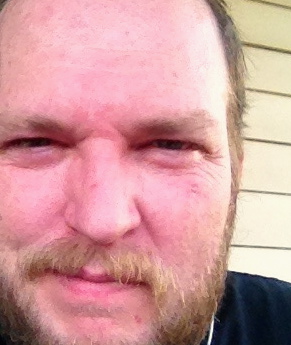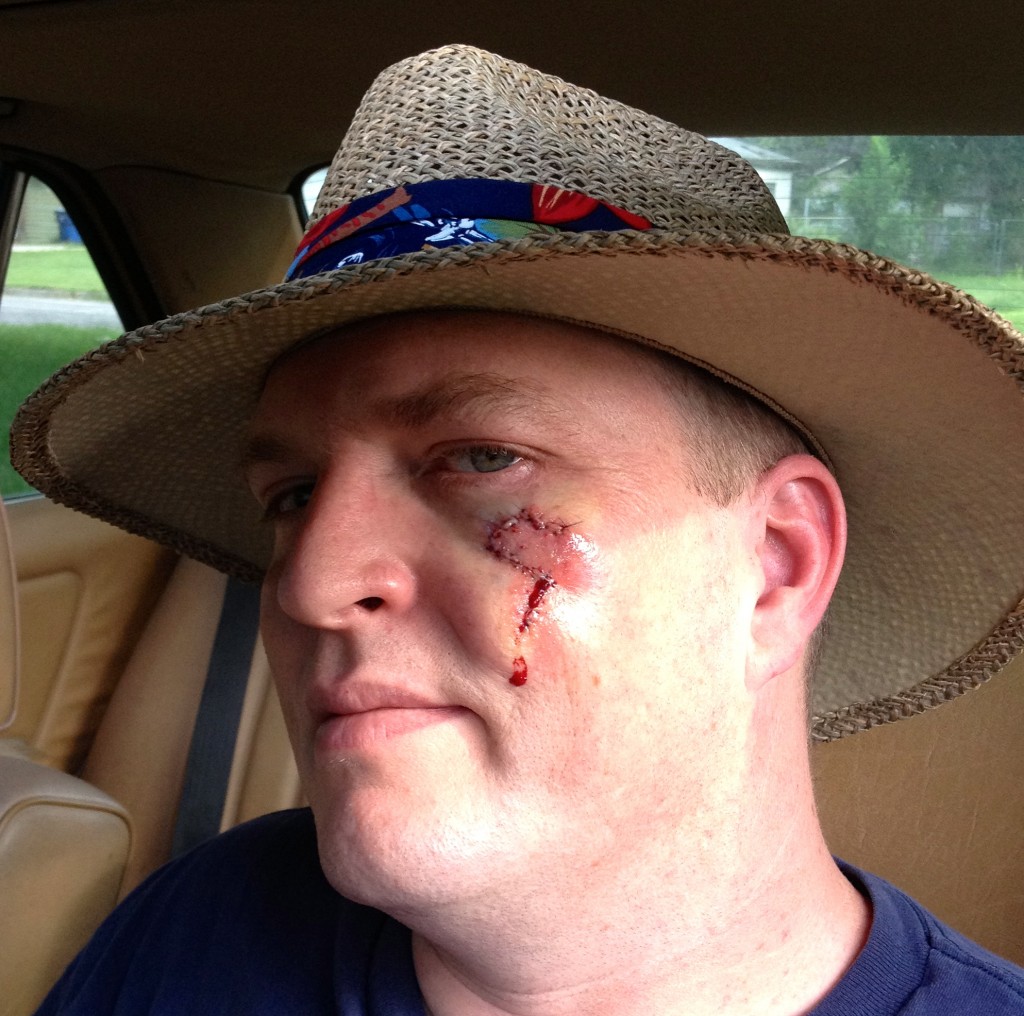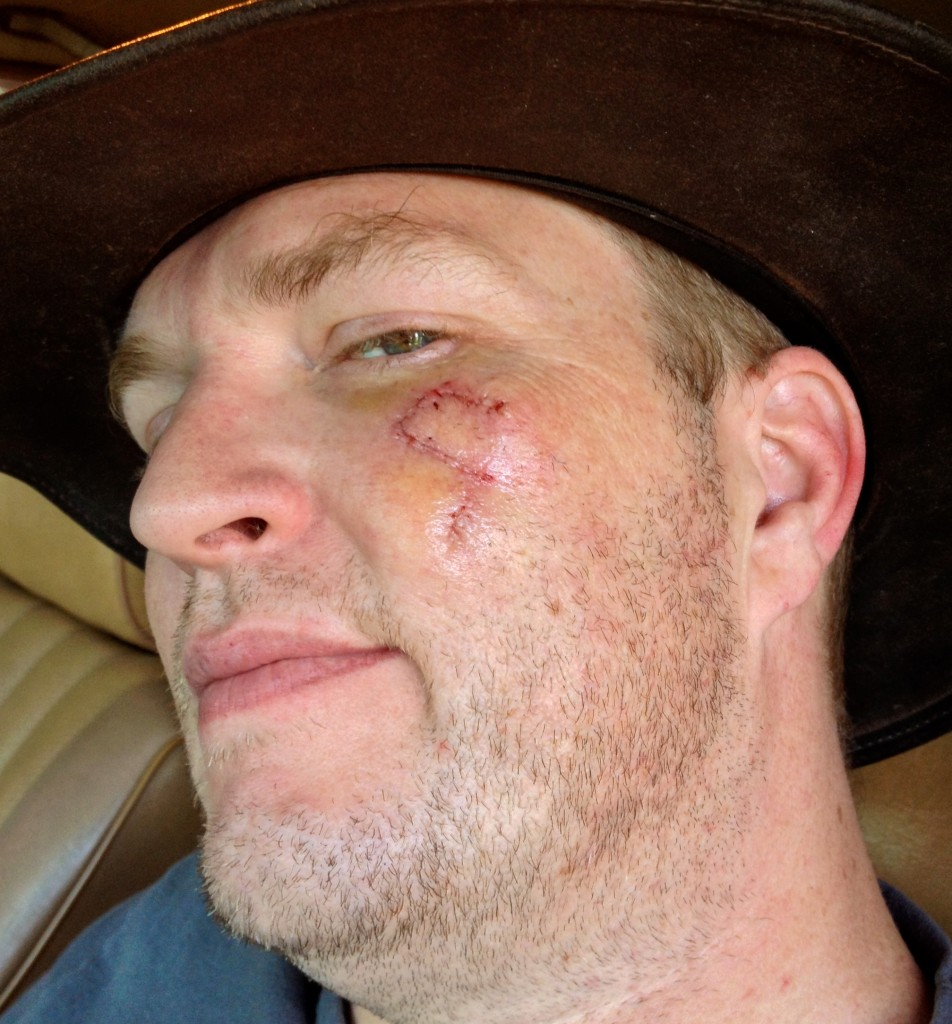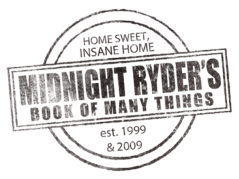
I’m going to preface this with two things:
- I say “cancer” because Basal Cell Carcinoma is a form of cancer. Â It’s also the most common form of cancer, and the least likely to metastasize (spread to other parts of the body) and it’s really, really, really rare that it becomes fatal (but, it can cause nerve damage, things like that.) Â Think of it as the short-bus cousin to “real” cancer – sure, it has the same last name, which makes it scary, but in a fight it’s usually knocked out with one punch.
- I take this way less seriously than I should. Â It’s still a form of cancer.
So, before you read “OMG! Â He had cancer!” into it, remember that it was never a life-threatening situation. Â Sure, technically it was cancer, and technically I could say I’m a cancer survivor, but, I’d much rather hand that badge over to friends (and family) who have face real cancer scenarios that were life threatening.
But, there is a reason I’m writing this – during the two surgeries I had for it, I made sure to take a couple of pictures. Â That sort of reduces questions among the people I know in an online-only way. Â When I’ve posted those pictures, I’ve gotten some interesting feedback (and a couple horror stories) saying it’s a good thing that I posted them: it helps other people be less scared to go to the doctor to have them looked at, and it helps raise awareness.
Well… why not tell the tale from beginning to end, to give people who have to deal with something like this (or are afraid to go to the doctor over something like this) a reason to have it checked out, and hope that “cancer” doesn’t always mean “oh God, I’m going to die.”
This actually all starts way back, maybe four years ago or so. Â I had a small spot that looked like an ingrown hair that I happened to notice. Â Nothing big, really, but after popping it and cleaning it with a little alcohol, it healed up… sort of. Â Every once in a while ti seemed to return, and the process was repeated.
Then it quit healing at all. Â It became a small sore spot that just never quite went away, and I tried all sorts of ways of getting it to fully heal. Â Anita Cochran commented after seeing pictures of my second surgery that she always just assumed it was a scar.
Eventually, it started looking bad – it was getting bigger, and less and less time was it covered with any sort of skin. Â Now, you’re probably thinking, “Gee, why didn’t he get it fixed sooner? Â Years have passed already!” Â I didn’t have any health insurance, and I was broke as hell. Â And even after I did get insurance (I got married, and she had company insurance), I was still fairly broke for a while.
Oh, and it doesn’t help that I’m one of those guys about going to the doctor when something is wrong. Â I’ve had surgery on my shoulder, for instance: I went in about my knee, and said “OH, by the way, Doctor, is my shoulder supposed to do this?” Â I put my shoulder out of socket and back in rather easily. Â The sports medicine doctor changed to a nice shade of green, and said “No… it’s… no, that’s not right.” Â Only then did I bother to have it worked on – when you manage to freak out a doctor who specializes in stuff being broken or torn in joints, it’s probably time to get it fixed.
The tearing point was all about vanity: Â I had a meeting coming up for cloudPages.me within a month, and I needed to look reasonably good for it. Â After my wife pointed out that I was showing up for this big show-off event with a hole in my face, I figured it was time to take a look at getting it fixed. Â And, since God had blessed me with work that was paying reasonably good, I had the money to visit a doctor.
When I went in to see Dr. Rivera, she walked in, introduced herself, and took one look at my face – not even up close! – and said: “Basal Cell Carcinoma. Â Or possibly Squamous Cell Carcinoma. Â We need to get that taken care of.” Â After that we went through all the risks, her treatment plan, the usual background check on family risk factors, and all that good stuff.
And she set up an appointment to have it surgically removed in her office the next day. Â She wasn’t messing around.

She told me quite a bit about the condition, but I never take someone’s word at face value: I know how to read, all the way into medical papers if I have to, to find everything I need and want to know about a subject.
- Basal Cell Carcinoma, as I mentioned before, is one of the least dangerous forms of cancer. Â It’s also one of the most common, with about 800,000 cases in the US alone. Â It’s inconvenient, can cause other health issues (for instance, having a hole in your face that doesn’t heal), can cause nerve damage in some cases, and a few other things.
- Squamous Cell Carcinoma is slightly more dangerous. Â It’s a little deeper in the tissue, it can metastasize, and the other areas of the body it hits can become fatal (it’s also got some interesting points: just like Basal Cell is actually an umbrella term for a number of more specific bits and pieces, Squamous Cell Carcinoma includes a couple of forms that are related to HPV.) Â It doesn’t kill a lot of people, but it fatality rate is non-zero – it most certainly needs to be taken care of when it happens.
BTW: Â while these are the “easy ones” to take care of, being a non-mellanoma skin cancer, melanoma is the thing to REALLY watch out for: Â it’s fast, it’s agressive, and it can be fatal.
So, the surgery: Â it wasn’t bad. Â I’ve got a pretty good tolerance for pain anyway, and I’m not squeamish about my own blood. Â Heck, if it would have been possible, I would have had them set up a mirror so I could watch. Â But, it wasn’t – if you look at the pictures, you can see how close to the eye it was, so I spent all my time sitting there getting cut on with my eyes closed so that blood wouldn’t run into it, just in case.
It only took about 30 minutes to get cut out, and they sent the chunk to the lab to be looked at. Â As you can see in the picture, it was a pretty decent sized bit they took out.
Unfortunately, it wasn’t enough. Â When they send it to the lab, they’re looking for two things: first, was it indeed basal cell carcinoma (it was), and second, was there any in the edge of the cut (the margin)? Â Well, there was.
Because she had already tried, and pulled the skin below my eye as tight as she dared, she sent me to a plastic surgeon here in Wichita, Dr. Peterson.
He checked it out, and spelled it all out for me. Â I explained I was tight on cash (I hadn’t even gotten the bill from the first surgery yet), and he gave me all the options:
- Radiation treatment. Â It sort of works for a case like this, but it isn’t optimal. Â It’s multiple visits, it’s expensive, and because there’s no biopsy afterward, you aren’t sure if you get it all or not. Â There’s about an 80% chance it’s going to come back. Â And, as an added bonus, the radiation treatment can potentially cause squamous cell carcinoma later, because it’s on the layers of skin.
- 2Do nothing. Â It could potentially set there for years and do nothing. Â Then again, it might start growing faster. Â There’s no way to really know.
- Go to a full surgical procedure, and have to pay for a hospital surgical suite, the Doctor, the anesthesiologist, etc.
- Just do it in the office under a local. Â With exception of doing nothing, it’s the cheapest.
Since I’m not squeamish, and I’m cheap, option #4 sounded the best.
Now, this guy doesn’t mess around. Â He’s got a great bedside manner, but he’s a plastic surgeon: he knows how to make sure a wound heals best. Â So, no aspirin, not multi-vitamins, etc. for two weeks before the surgery, and not while the stitches are in.
Up to this point, I hadn’t been too nervous. Â He explained what sort of surgery it was going to be, how it was going to work, how big of a section they were probably going to take, and what sort of scar to expect. Â I was going to have a question mark on my face. Â Seriously – it’s a backwards shaped question mark (or, the head of the Leo constellation, which is appropriate since I’m a Leo 😉

I wasn’t nervous about getting cut on again. Â I was a bit concerned that if they missed getting it all the first time, was he going to get it all the second time, resulting in me having to get cut on a third time in a row. Â But, that was a small concern, really.
No, see, I have a low tolerance for boredom. Â It was described that the surgery was going to take between 30 minutes to an hour. Â An hour of me sitting there, motionless, no entertainment, nothing to see, nothing to do. Â That’s like a special form of torture for me. Â That I dreaded.
The process was pretty simple: Â go in, cut out the bad section, which was about the size of a quarter. Â Then I was going to have to wait a bit (with a section of my face cut open) while the lab tested the piece: if the margins looked good, they would close up. Â If they didn’t look good, the Doctor would remove some more, and it would be tested again. Â This particular process reduces the likelyhood of return visits: it has a 94% success rate, where the carcinoma never returns (that doesn’t preclude things like developing a different cancer spot somewhere else later, as a separate incident), as opposed to a 20% success rate for operations like burning or freezing off the localized area.
And, well, that’s exactly what happened: Â he cut me open, took out a chunk, and had it tested. Â The lab was a little slow – in his opinion – but they eventually returned a verdict indicating it was good. Â Then, the Doctor pulled a skin flap across and up, producing a weird backwards question mark on my face – this prevented pulling down further on the eyelid, potentially preventing me from blinking effectively, or at least looking like I had a weird asymmetrical face.
All told, it took about an hour. Â Not bad, really.
A week later, I popped back in to have the stitches removed. Â I had counted 13 stitches on the outside – when I talked to the nurse who was pulling them, I found out that in reality there were over 40 stitches in my face, some inside, some outside! Â Pretty impressive score on the “Yeah, well, this wound had…” comparison chart – great for party talk later when the one-up manship games with scars happen 🙂
It’s going to be months before it completely fades, of course. Â Right now, it doesn’t look particularly pretty (see the final picture), but it will get better with time. Â And, at the moment, it has no feeling – but the nerves will slowly return over the next couple of months. Â One permanent down-side for me: since the skin that’s used is actually from lower on my cheek than it’s final resting place, I now have a patch of fur that’s not part of the normal facial hair pattern, but that’s what they make a razor for 🙂

So, if you’ve got an “odd spot” on your face, hands, shoulders, arms, or neck, go have it checked out. Â Yes, it’s probably “nothing”, and even if it is something, it’s not that big of a deal to get it taken care of. Â It doesn’t hurt that much to have it done, and it doesn’t leave that big of a scar (heck, my procedure probably could have been done with even less scaring if it had been done at the hospital rather than in-office. Â I’m cheap.)
Plus: Â “Pain fades. Â Chicks dig scars.” Â Particularly cool looking scars 😉
Some final thoughts: Â While I didn’t know what it was, I did decide after a while to try some of the home remedies for stuff like this, ranging from cures for re-occurring blemishes to skin cancer cures. Â Which ones? Â Honey, vinegar, aspirin, baking soda, and a couple others. Â Some of them applied to the location, some of them ingested.
The truth is, none of them did anything to help in the long term. Â Topical application of ground-up aspirin did have a temporary effect – the spot would dry up, and the skin would re-form for a while. Â Then, eventually, the skin would break open again. Â And, towards the final months, even the aspirin didn’t do anything interesting to the site.
There’s no replacement for a good doctor that knows what they are doing. Â The know what’s what when it comes to conditions like this, and they have treatments that really do the job (mine was fairly radical because of it’s size, so if caught early, getting something fixed would look nothing like the scar on my face). Â Spending time on the Internet researching home remedies for “cancer” is time you should be spending in the doctors office.
That’s not to say everything for herbal / home remedies are bunk: Â for instance, I used to have a wart on my left index finger. Â A week of treating it with ground aspirin and it disappeared. Â (Note: warts are weird anyways. Â There’s a weird psychosomatic issue that occurs with any wart treatment – if you really think it’s going to work, it will probably work.) Â Honey on a normal wound is pretty useful, for instance, because it has a precursor to hydrogen peroxide that produces hydrogen peroxide when heat and moisture are applied. Â And honey really does have anti-biotic properties: Â methylglyoxal occurs naturally at varying levels in different types of honey (though, oddly, methylglyoxal binds to pain receptors, making them more sensitive. Â Nature has very few free rides 😉 Â So if you think I’m saying none of the natural health stuff works – far from it, it’s just not a silver bullet, and I spent a lot of time reading actual studies and papers to get past the BS that people end up posting on the Internet (usually in association with a product they are selling 🙂


Pingback: Understanding Cancer and it's Treatments - Physician House Calls of Kansas
Pingback: Understanding Cancer and it's Treatments, Part II - Physician House Calls of Kansas